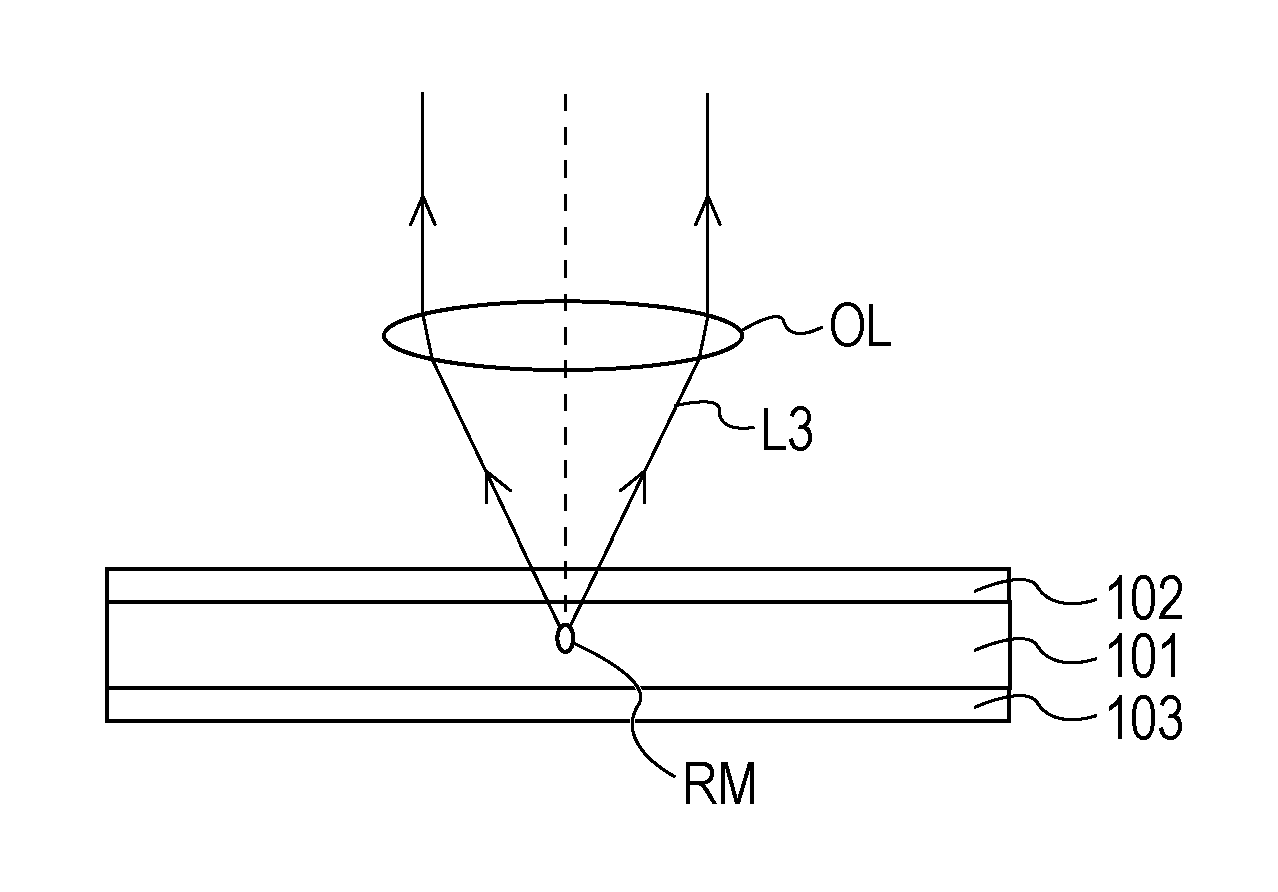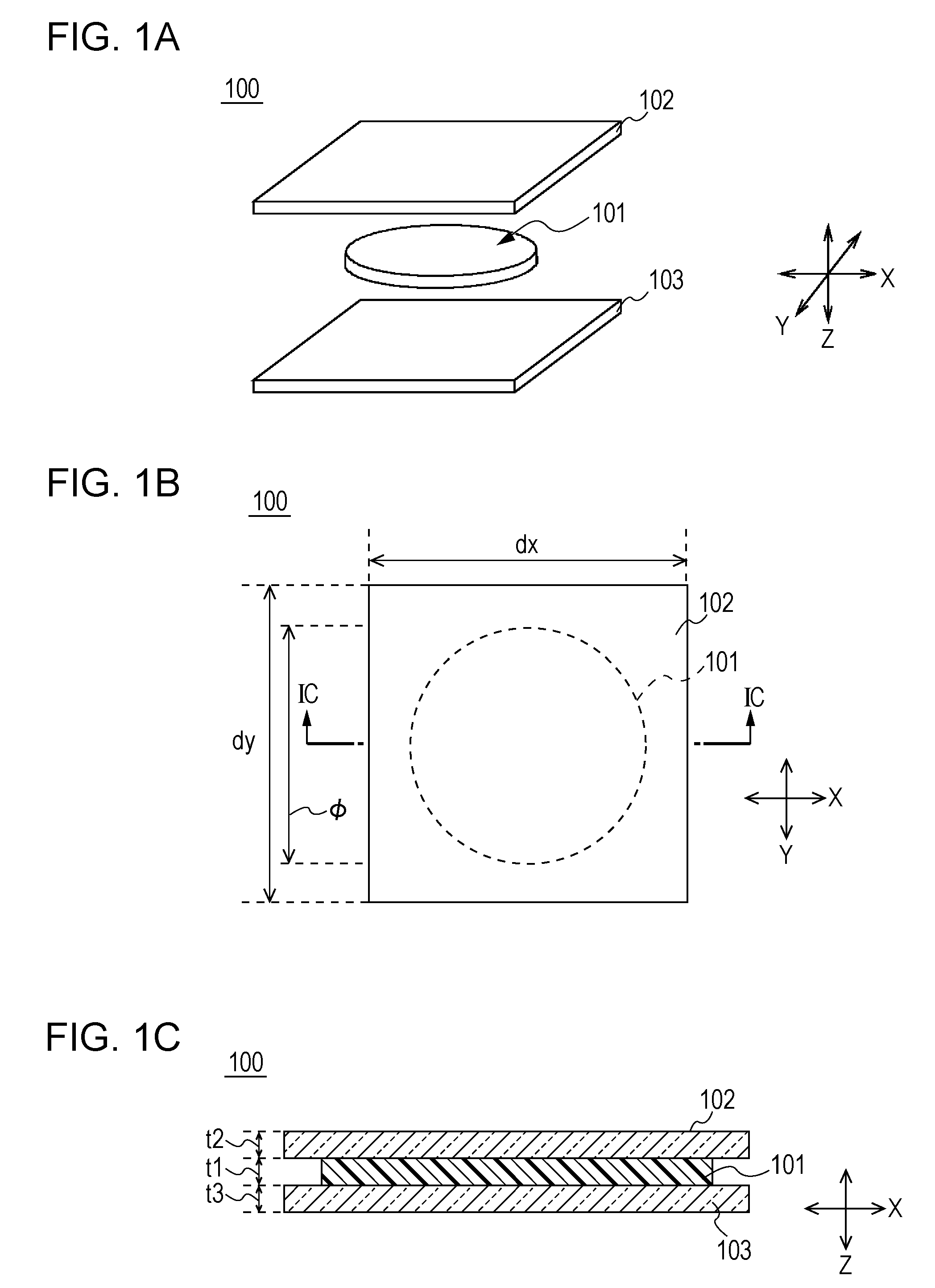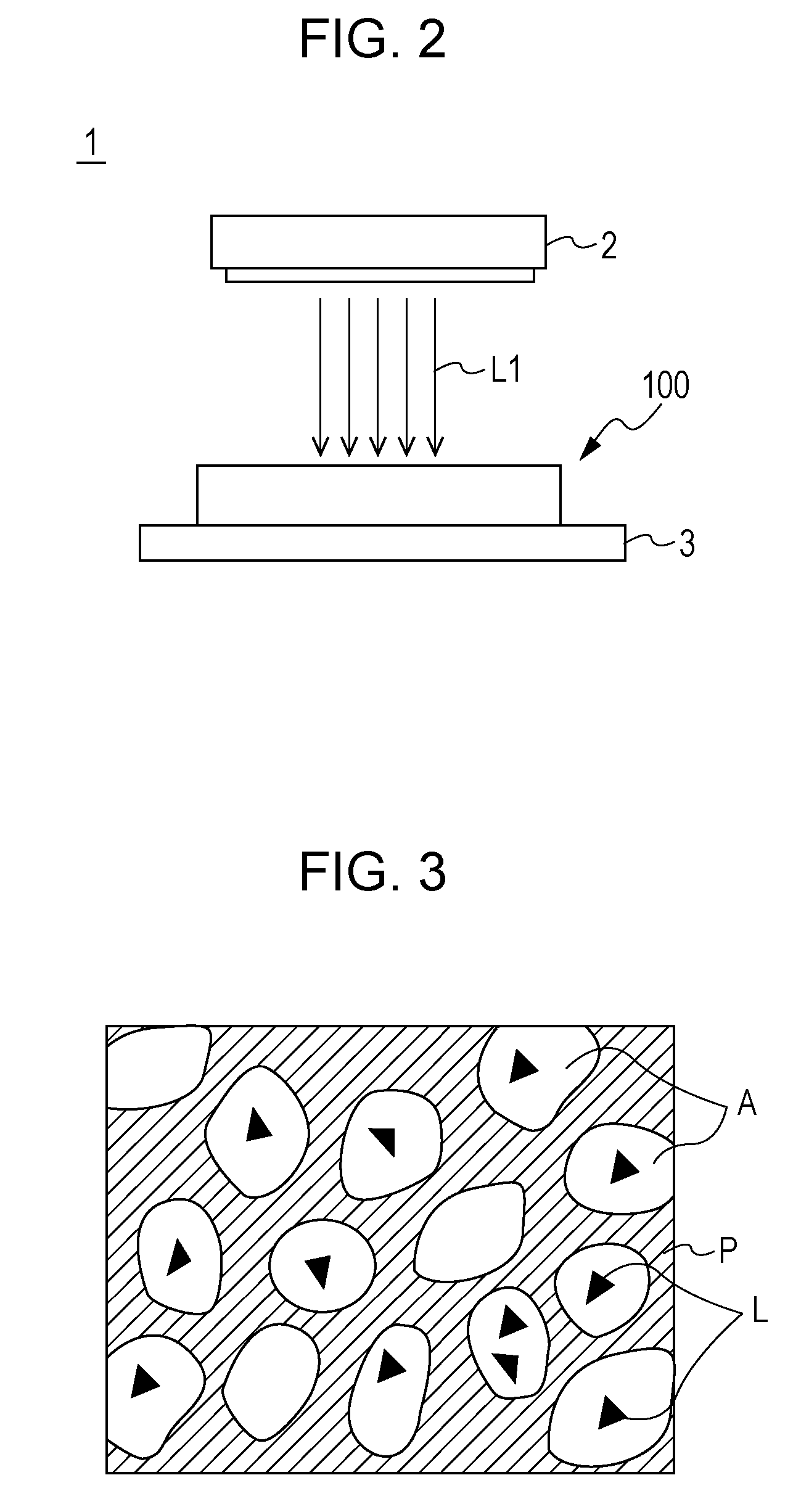Optical information recording medium
a technology of optical information and recording medium, which is applied in the direction of optical recording/reproducing/erasing methods, instruments, photosensitive materials, etc., can solve the problems of difficult implementation of drive systems in practice, inability to significantly increase the absorption factor in the vicinity of the focus, and complicated optical systems. achieve the effect of efficient absorbing, efficient absorbing, and improving a recording ra
- Summary
- Abstract
- Description
- Claims
- Application Information
AI Technical Summary
Benefits of technology
Problems solved by technology
Method used
Image
Examples
example 1
(4-1) Example 1
(4-1-1) Formation of Samples
[0102]Samples S1 to S4 were each formed as the optical information recording medium 100 under the following conditions. In addition, as comparative samples, Comparative Samples R1 to R4 were each also formed as the optical information recording medium 100.
[0103]Four types of photopolymerization initiators (shown below) used in Example 1 are represented by photopolymerization initiators A, B, D, and E. In addition, as the acid generator, besides the photopolymerization initiators, a Lewis acid compound C was also used. As the polymerization initiators and the Lewis acid compound, commercially available compounds were used. Since the polymerization initiators and the Lewis acid compound were commercially available compounds, various additives might also be contained in some cases besides the compounds shown below.
[0104]Photopolymerization initiator A: cumyltolyliodonium tetrakis(pentafluorophenyl)borate (General Formula (2))
[0105]Photopolymer...
example 2
(4-2) Example 2
(4-2-1) Formation of Samples
[0161]In a manner similar to that in Example 1, Samples S11 to S14 were formed as the optical information recording medium 100. In addition, as comparative samples, Comparative Samples R11 to R13 were also formed as the optical information recording medium 100.
[0162]In Example 2, besides the photopolymerization initiators A, D, and E used in Example 1, one type of photopolymerization initiator (shown below) was used and was referred to as a photopolymerization initiator F.
[0163]Photopolymerization initiator F: bis(t-butyl phenyl)iodonium hexafluoroantimonate (General Formula (5))
[0164]In addition, a fluorene difunctional epoxy is a monomer having the fluorene structure shown by the general formula (1) and two functional epoxy groups (EX1020 manufactured by Osaka Gas Chemicals Co., Ltd.).
[0165]In the following table, monomers, photopolymerization initiators, and the amounts thereof used for the liquid materials M1 of Samples S11 to S14 and C...
PUM
 Login to View More
Login to View More Abstract
Description
Claims
Application Information
 Login to View More
Login to View More - R&D
- Intellectual Property
- Life Sciences
- Materials
- Tech Scout
- Unparalleled Data Quality
- Higher Quality Content
- 60% Fewer Hallucinations
Browse by: Latest US Patents, China's latest patents, Technical Efficacy Thesaurus, Application Domain, Technology Topic, Popular Technical Reports.
© 2025 PatSnap. All rights reserved.Legal|Privacy policy|Modern Slavery Act Transparency Statement|Sitemap|About US| Contact US: help@patsnap.com



